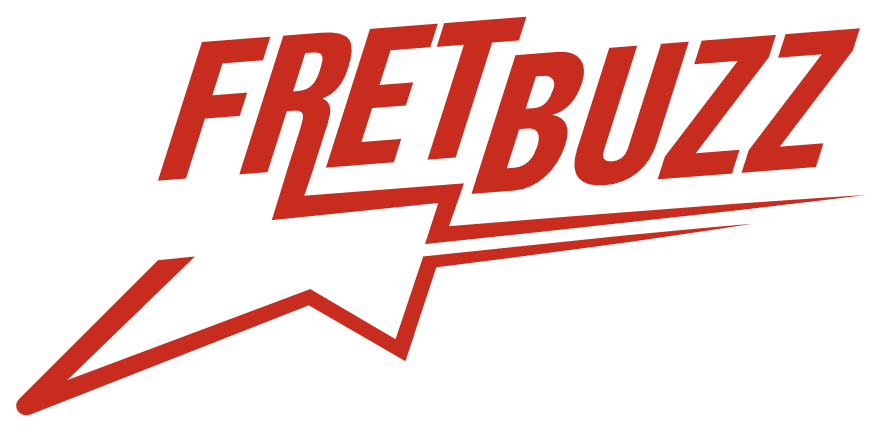“I really had no idea I was making an album. I was just making some music for no real reason.”
Given the nearly 10-year gap since Billy Morrison’s last record God Shaped Hole, it stands to reason that Billy Idol’s rhythm guitarist was eager to write and record his third solo album, the recently released The Morrison Project. After all – he took his time and pulled all the stops. Or did he?
On the surface, the album looks like a painstakingly assembled, star-studded collection turbo-charged for mass acclaim. The album, an amalgam of hard rock, metal, EDM, industrial, and a bit of rap, took off with the single “Crack Cocaine,” which features vocals by Ozzy Osbourne, and immediately shot up the charts. Elsewhere, Slipknot and Stone Sour vocalist Corey Taylor and Steve Vai join Morrison on “Incite the Watch,” and Ministry frontman Al Jourgensen and current Motley Crue guitarist John 5 (Rob Zombie, ex-Marilyn Manson) guest on “The Ayes Have It.” Other tracks include appearances by Run DMC’s Darrell McDaniels, Gary Numan’s daughter Persia Numan, ex-Marilyn Manson bassist Geordie White (aka Twiggy Ramirez). And, even celebrated songwriter and 4 Non Blondes singer Linda Perry. Yet, The Morrison project wasn’t originally intended as an album, let alone a showcase of high-caliber talent. Even “Crack Cocaine,” driven by Morrison’s close friend, Ozzy, was a track that sat on the shelves long before the guitarist decided to release another solo album.
“Steve Stevens and Ozzy wrote ‘Crack Cocaine’ years ago,” Morrison says. “We’d recorded it, and then towards the end of this jam thing I was doing for fun during the pandemic, Sharon [Osbourne] said, ‘We think you should put this out as a single.’ I said, ‘Well, what do you mean?’ And she said, ‘The whole nine yards. It’s a great song. You should release it and do a video.’ That left me thinking, “Well, that’s such a generous offer from Ozzy and Sharon, and I don’t want to waste it.’”
FretBuzz: You and Ozzy have been friends for years. How did you happen to be in the studio with him and Steve Stevens to write what became “Crack Cocaine?”
Morrison: Obviously, we’ve made some music over the years. I did “Gods of Rock N Roll” with him [which came out in 2014]. Hanging out with the guy so much, traveling with him, we’re often talking about ideas, and occasionally those ideas become recorded demos. So, when Steve [Stevens] and I were writing Billy Idol’s [2014 album] Kings & Queens of the Underground, we wrote the riffs for what became “Crack Cocaine.” We were messing around with tuning the guitar down a whole step and doing the whole Zakk Wylde squealing harmonics thing. After we wrote it, I said to Steve, “Ozzy would be great on this.” Steve agreed, so I played it to Ozzy, and it grabbed whatever part of his brain gets turned on when he likes something. You can see it in his eyes. Bombs go off in his mind and he just starts singing. When I played it for him, he came up with the lyrics for the chorus right away, and I said, “Ozzy, we should record this!” Steve had a place on Sunset [Boulevard], and Ozzy came ‘round and recorded the vocals that day. It’s his melody and predominantly his lyrics, and it was so good. We mixed it, finished the song and gave it back to him, and he’s like, “This is amazing!” And then he went and did some other things and the track just sat there until I started working on this new stuff.
FretBuzz: Can you elaborate about the jam sessions you did during COVID. Did those involve Stevens, Vai, Taylor, Jourgensen and the other guests on The Morrison Project?
Morrison: Not at all. I really had no idea I was making an album, and I hadn’t even thought of doing anything with those guys. I was just making some music for no real reason with [bassist] Jeordie White (aka Twiggy Ramirez) from Marilyn Manson’s band and [drummer] Eric Eldenius from my band. I’ve got a great home studio, so they would come by. We all missed playing during the pandemic, so we’d do what we do and because of that there was no real goal or gameplan. I actually believe the album came out sounding so good because of that.
FretBuzz: You’re best known for playing rhythm guitar in Billy Idol’s band, which is rooted in pop, rock, melodic punk. But The Morrison Project is more modern, featuring elements of electronic music, industrial, and metal.
Morrison: I love hip-hop, I love EDM. I love technology. It’s fun to experiment with all of that stuff. So, there we were just messing around with all this stuff we liked. We weren’t trying to write a hit single or anything. I’m playing EDM samples while Jeordie’s playing some bass lines, and we wrote a ton of music that way. They weren’t songs to begin with. They were riffs and parts of songs.
FretBuzz: How did the project turn into a full record?
Morrison: I didn’t just want to put out the song with Ozzy. So I thought, “What if I take some of this other music I’ve been messing around, completely strip it down, and redo it properly?” That’s the first time I thought about making a record. I wasn’t sure if it would be an EP or an LP yet, but I was taking what we did and putting full songs together. And then the idea of having guests comes in. One song, [which became “Incite the Watch”], comes together, and I’m like, “[Slipknot vocalist] Corey Taylor would sound fantastic on this.” He’s a good friend, so I send him the track and he sends it back to me with his vocals on it. Amazing. So now I’ve got an Ozzy song, a Corey Taylor song and three Billy Morrison songs. Everything took off from there.
FretBuzz: “Incite the Watch” includes guitar work from Steve Vai. Did he join you in the studio during the pandemic?
Morrison: It was the same deal [as with Taylor]. I’m sitting there with this song “Incite the Watch.” I’ve got Corey Taylor singing and the chorus is strong. But there’s this strange three-key change and it comes during a long period that obviously needs a guitar solo. Well, who do you think of that can play solos for a long time in multiple keys and not lose your interest? And again, I’m very close to Steve Vai. He’s got a Billy Morrison signature. I’ve got a couple of his signatures. We’re good friends. So, I texted him, and like everyone else on the record, he came back to me. I told him what I wanted and he went, and he went, “What, like this?” And what he gave me was the perfect solo.
FretBuzz: Along with these established rock artists, you’ve got Darryl McDaniels from Run DMC, Gary Numan’s daughter Persia, and hit-writer/producer Linda Perry from 4 Non Blondes on various tracks.
Morrison: For me, the joy of this record is, I don’t think anyone would sit down and say, “I know what we should do. Let’s get Corey Taylor and Steve Vai on a song that doesn’t sound like Slipknot or Steve Vai.” Everyone did it for the right reasons. It was an organic, fun project that was done without any pressure. There was no stressing at all.
FretBuzz: You’re also friends with Ministry frontman Al Jourgensen, who joined forces with John 5 for “The Ayes Have It.” Jourgensen used your artwork for the 2021 Ministry album Moral Hygiene, and you’re credited with playing on a track for their new album Hopiumforthemasses. Still, that seems like an unusual pairing.
Morrison: Most people aren’t aware that I wrote a bunch of songs for the last couple of Ministry albums. I wasn’t credited. I don’t care. I’m not doing that to buy a new house. I did it because Al called me out one day and said, “Do you think you could write a Ministry song?” I said, “Al, I could write ten Ministry albums.” It’s in my DNA. I was at the Brixton Academy on the NWO tour [in 1992]. I’ve been steeped in Ministry history as a fan. So we got together and, yeah, I wrote a bunch of Ministry songs which are on the last two albums. And then I did a video with Ministry for the cover of Iggy Pop’s “Search and Destroy.” That was my idea. I approached Al with this slowed-down heavy version. He’s like, “That’s great. We should do it.” I ended up in the video and got up and played with them a few times. And funnily enough, the story behind the Al Jourgensen track on my album is a case of give and take. I called him up and went, “Right, it’s your turn. I want you to sing on a song on my solo album. He said, “No problem.” So, I sent him a track – not the track that’s on the album – and texted him that I needed some lyrics. He texted me that he got the album.
Another month goes by and I’m nearly done with the album. I reached out again and said, “Al, I’m nearly finished. I need to do this final track with you.” And he said, “I can’t find the MP3. Send it again.” I sent it again, and he gets back to me and says, “Oh, I’ve been writing lyrics for this other song.” And he sends me back a 50-second riff that I wrote for the last Ministry album that didn’t make it on there. And he has taken two months to write them. I rushed home and took that 50-second part and turned it into a four-minute long track.
FretBuzz: When did John 5 enter the picture?
Morrison: So, me and Al are sitting there listening to the unmixed track. Al looks at me and says, “You know who would be great on this? John5.” Well, John is a friend, so I texted him and told him what I wanted him to do. And he went, “I love Ministry!” That’s all it took. It was like clicking my fingers and making it happen.
FretBuzz: Was it a thrill to work with celebrated songwriter and producer Linda Perry on the ballad “Chasing Shadows?”
Morrison: I’m extremely proud of that. That song was written one hundred percent by me – the music and lyrics. I value Linda’s songwriting, her awards. Having her involved in this album on any level speaks volumes. That woman has written some of the most amazing pop songs we’ve ever heard, and she was the last guest I worked with because I had this ballad and I knew I wanted to do it, but I couldn’t sing it. And I was like, “I wonder if Linda would do it.” She’s very particular about what she does and when I contacted her she said, “I don’t like to do this stuff Billy.” But God bless her, she told me to send her the track. I sent her the demo, which I sang on, and she texted me back that she would do it, which I was thrilled about. I expected to go to Linda’s studio and she would arrange the song and add some parts. But she texted me back, “This is a beautiful song. I don’t want to change a thing.” She just took my demo and sang on it for me. As a songwriter, that is the ultimate accolade and she absolutely killed the vocal. What a way to end the album.


